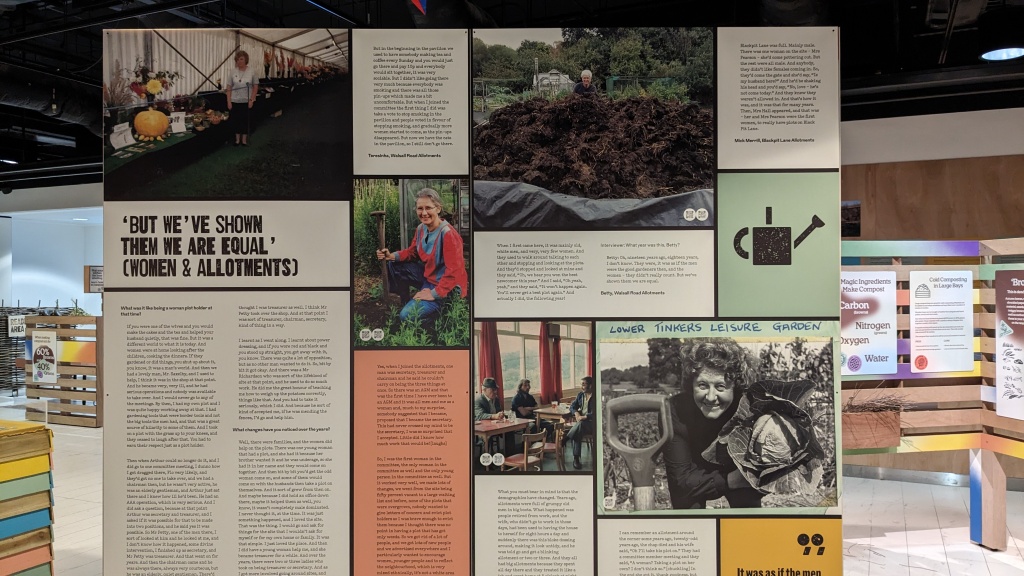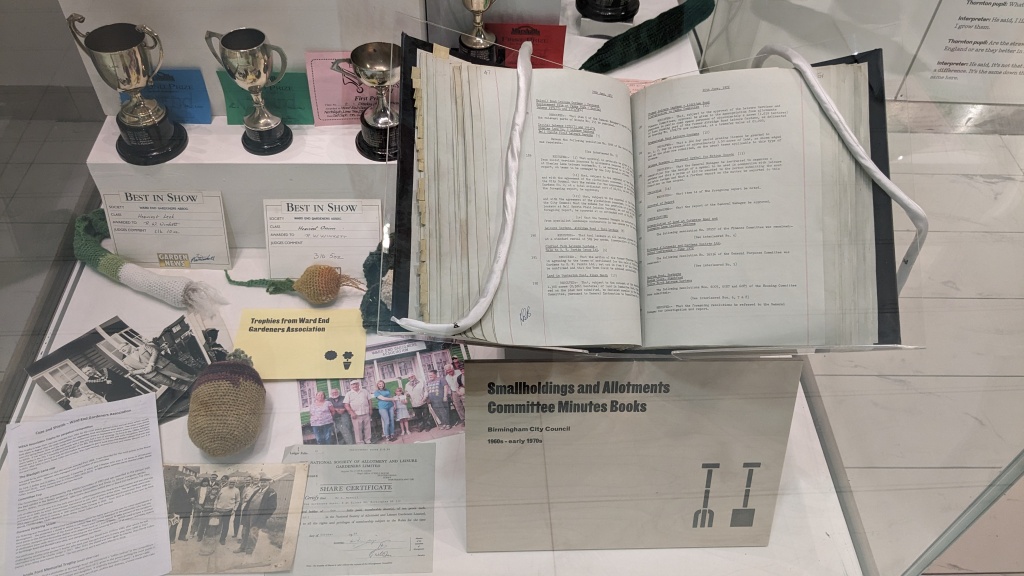If you need to put a smile on your face this week we heartily recommend the current exhibition on Level 3 of the Library of Birmingham.
With the title “Wotta Lotta Culture” (Inspired by a tagline from an article in the Birmingham Evening Mail, 26 August 1996) this exhibition explores the vibrant life and culture surrounding Birmingham allotments. Created and produced by General Public it is the culmination of a much larger project celebrating “one of Birmingham’s hidden assets”.
Birmingham has 113 allotment sites spread across 631 acres and nearly 7,000 plots which is more than any other local authority in the UK. At one point in the late 1960s, Birmingham was known as the ‘allotment capital’ of the UK. The project aims to encourage people to learn about the history of allotments and articulate why – in the context of environmental catastrophe – they are more important to the city than ever before.

Working closely with Birmingham and District Allotment Confederation, allotment associations, plot-holders city-wide and a committed volunteer team, the project presents an alternative social history of Birmingham via its allotment culture. To do this they recorded over 40 oral histories from allotment holders all over Birmingham. The researchers have grouped these interviews by theme to draw out common threads about the importance of these pockets of green and calm to both the individuals and their communities.
Many of these interviews can be read and heard throughout the exhibition, you can also access them via the website and ultimately they will be deposited with the Library of Birmingham for everyone to be able to access in the future.

The exhibition tells the story at both a personal and city-wide level by combining items from Birmingham City Council records, such as this Smallholdings and Allotments Committee book from the 1960s, with archives and artefacts from local allotment associations and personal treasures from individual allotment holders.
They have also researched the origins and development of the movement. Charting the beginnings of the Guinea Gardens in the 18th Century to the need to increase home grown produce during the First World War and the boom in the 1960s and 1970s following the publication of the influential Thorpe Report. Professor H. Thorpe, who worked at Birmingham University, was the chair of a government commissioned investigation into the current state of allotments in local authorities. For a fuller account of please read Kate Snell’s article on the project website.

Throughout the gallery artistic responses and art work, which has come out of local school workshops during the project, joyfully decorate the space.

- If this project has inspired you to find out more about allotments or the history of allotments in Birmingham we have a source guide here full of suggestions from the archives about where to start.
- The exhibition is open now and runs until the 25th November in the Gallery, Level 3, Library of Birmingham.
- The full project website can be found at https://thebirminghamallotmentproject.co.uk/
Kathryn Hall, Archivist
